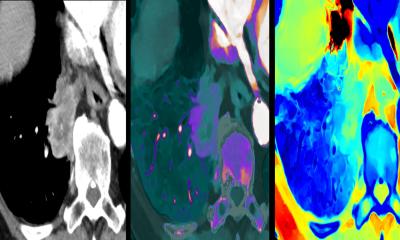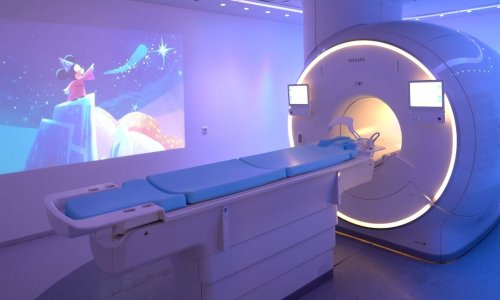Article • Lab2Go
POC test detects myocardial infarction
Philips Minicare delivers rule-in/rule-out readings for heart attacks in 10 minutes. It takes a lot of hard work to make things easy. Biomedical experts at Royal Philips have spent more than 10 years developing a simple test for the emergency department that, in less than 10 minutes, may indicate whether a patient suffering chest pains is having a heart attack.
Report: John Brosky

The company’s new Minicare I-20 point-of-care (POC) system is now undergoing field evaluation at six prominent European hospitals as part of Lab2Go, the three-year European Union-funded project. If successful, this handheld, bedside device would open a new pathway for rapid, reliable diagnosis that responds to a long hoped-for, critical need in emergency medicine.
Professor Volkher Scharnhorst PhD, from the Catharina Hospital in Eindhoven, the Netherlands, presented the preliminary results of the Lab2Go evaluation to colleagues at EuroMedLab 2015. According to him, Minicare Acute has the potential to support near-patient testing for people suffering acute coronary syndrome when they arrive at the Emergency Department; and therefore would enable faster diagnosis or treatment.
If it sounds simple so far, here comes the fun part − making it work. The widely accepted test for a rule-in/rule-out decision on heart attacks is the Troponin I (cTnI) assay. A physician draws a patient’s blood and the sample is sent to the central lab and after 60 minutes, the answer comes back. While the patient has to wait, often distressed, until the results return and the physician can then determine what treatment to provide.

To cut that window for treatment from 60 minutes to 10 minutes, Philips had to overcome a series of technical challenges. First, the simple finger prick to draw a droplet of blood for the POC test means drawing capillary blood, which is different from venous blood used in today’s lab tests. Would the results be comparable?
Second, to reduce work for emergency departments, the Philips POC test needs to be user friendly and reliable by relying on microfluidics and chemistry that require no additional steps for staff.
Third, all the complexity of a laboratory instrument needs to be reduced to a hand-held device that anyone can operate without special training. To solve the miniaturisation challenge, Philips brings together an unexpected combination of nanotechnology with a compact disc player. It turns out that the optics used for reading music and film, an early Philips invention, work with a precision and reliability that can be applied to chemical testing. By mixing magnetically charged nanoparticles in the blood sample, the optics can detect and quantify the prevalence of a given biomarker – in this case, the cTnI protein indicating acute coronary syndrome.
At Philips, the potential was discovered long ago. The work to create a handheld diagnostic reader instrument began in earnest in 2009 by looking at ways to enhance the sensitivity of the detection and reduce the sample concentration required. According to Michel Simons, Marketing Director of Philips Handheld Diagnostics in Eindhoven, ‘no one else can deliver these high quality results from a finger-prick sample in less than 10 minutes.’
Looking beyond this first cardiac test, he sees a wider range of potential applications in the emergency department for the Minicare system. ‘We will be able to measure all the different proteins in less than 10 minutes. We can do multiplexing on our device to test different parameters so that, with one drop of blood on the same cartridge with a nano-dispensing technology, we will be able to conduct up to 20 different tests at the same time.’

Jos Rijntjes, who leads Commercial Operations for Philips Handheld Diagnostics said that ‘with the successful implementation of this first assay for chest pain, we can go on to apply the same technology and methodologies to additional assays. In one square millimetre we might, for example, be able to load tests for high fever, trauma, brain injury, or mental disorders – offering a series of assays to help emergency physicians understand which patient needs immediate attention and treatment when rapid results are critical.’
The second challenge for ease-of-use for the device is at the heart of the current test in the Lab2Go project. In addition to clinical results, the aim of the project is to gather evaluations of real-world use and identify where the workflow or usability can be improved. Rijntjes explains that the Minicare I-20 cartridges use dry chemistry without the liquid reagents found in central laboratories. ‘The only fluid in the disposable cartridge comes from the tiny droplet of the patient’s blood,’ he said. ‘There is no need to add agents, no need to wash, to dilute − no need for the staff to do anything but put the patient’s finger on the cartridge and then insert it in the Minicare Acute reader.’
Returning to the first challenge, after all the engineering and technological marvels, the entire success for this break-through approach comes down to that finger prick and the micro droplet of blood from the patient. As one physician said, if there is not a strong correlation between results from a capillary blood sample and the traditional troponin results using venous blood, ‘out go the finger-pricks and the utter simplicity.’
Scharnhorst is cautiously optimistic, reporting what he called a correlation that is ‘very comparable and offers the potential to interchangeably use both capillary and venous samples.’ The full results of the evaluation from hospitals in Austria, France, Germany, Netherlands and the United Kingdom are not expected until 2016.
Meanwhile, Philips faces one more critical challenge, clinical trials that will put the Minicare Acute troponin assay up against laboratory results in a head-to-head comparison. Simons explained: ‘We plan to start in Europe, but aim to have parallel trials running in the US as soon as possible. Discussions are currently underway with the FDA (Food & Drug Administration) to determine what our clinical trial needs to look like. Several sites in the U.S. have already expressed interest in joining the trial.’
28.08.2015











